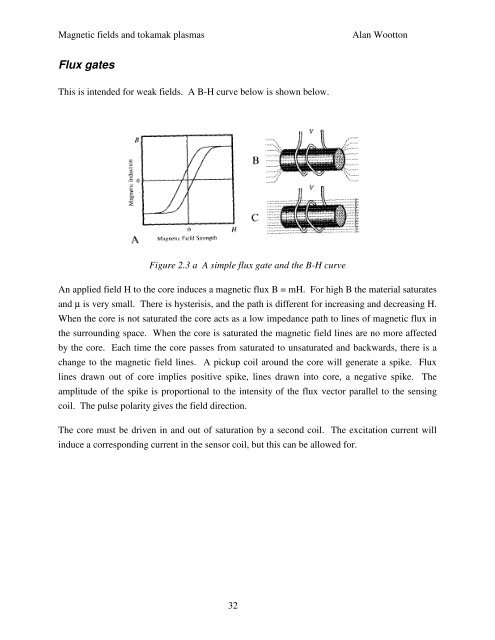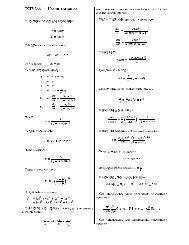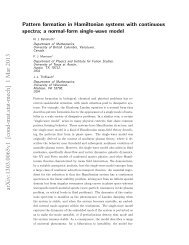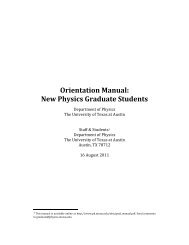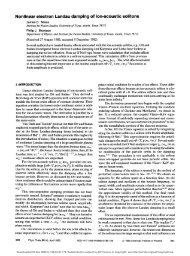Magnetic Fields and Magnetic Diagnostics for Tokamak Plasmas
Magnetic Fields and Magnetic Diagnostics for Tokamak Plasmas
Magnetic Fields and Magnetic Diagnostics for Tokamak Plasmas
You also want an ePaper? Increase the reach of your titles
YUMPU automatically turns print PDFs into web optimized ePapers that Google loves.
<strong>Magnetic</strong> fields <strong>and</strong> tokamak plasmas<br />
Alan Wootton<br />
Flux gates<br />
This is intended <strong>for</strong> weak fields. A B-H curve below is shown below.<br />
Figure 2.3 a A simple flux gate <strong>and</strong> the B-H curve<br />
An applied field H to the core induces a magnetic flux B = mH. For high B the material saturates<br />
<strong>and</strong> µ is very small. There is hysterisis, <strong>and</strong> the path is different <strong>for</strong> increasing <strong>and</strong> decreasing H.<br />
When the core is not saturated the core acts as a low impedance path to lines of magnetic flux in<br />
the surrounding space. When the core is saturated the magnetic field lines are no more affected<br />
by the core. Each time the core passes from saturated to unsaturated <strong>and</strong> backwards, there is a<br />
change to the magnetic field lines. A pickup coil around the core will generate a spike. Flux<br />
lines drawn out of core implies positive spike, lines drawn into core, a negative spike. The<br />
amplitude of the spike is proportional to the intensity of the flux vector parallel to the sensing<br />
coil. The pulse polarity gives the field direction.<br />
The core must be driven in <strong>and</strong> out of saturation by a second coil. The excitation current will<br />
induce a corresponding current in the sensor coil, but this can be allowed <strong>for</strong>.<br />
32


